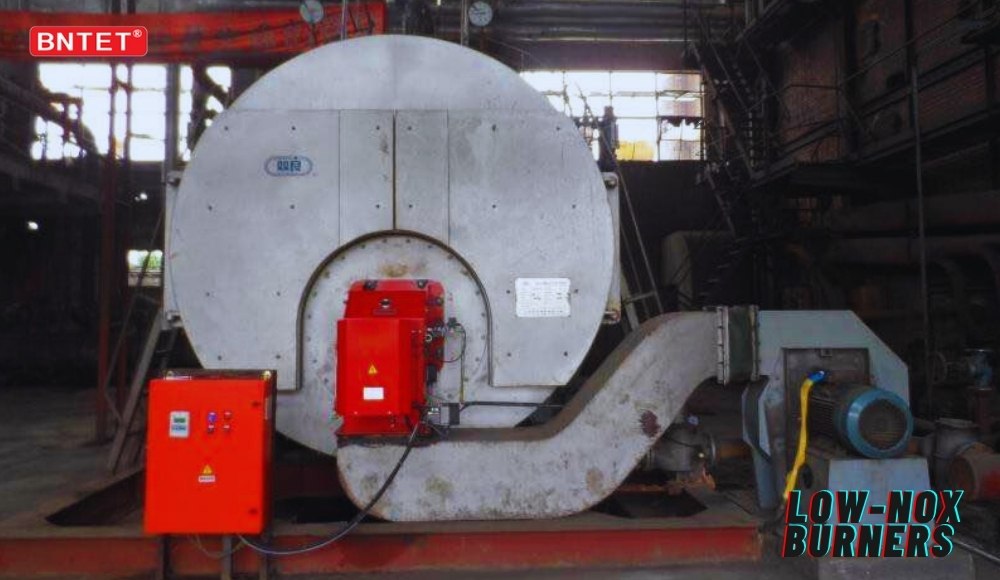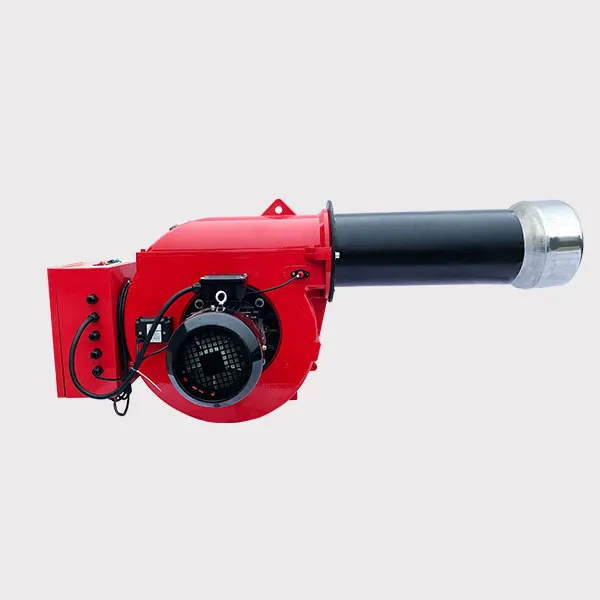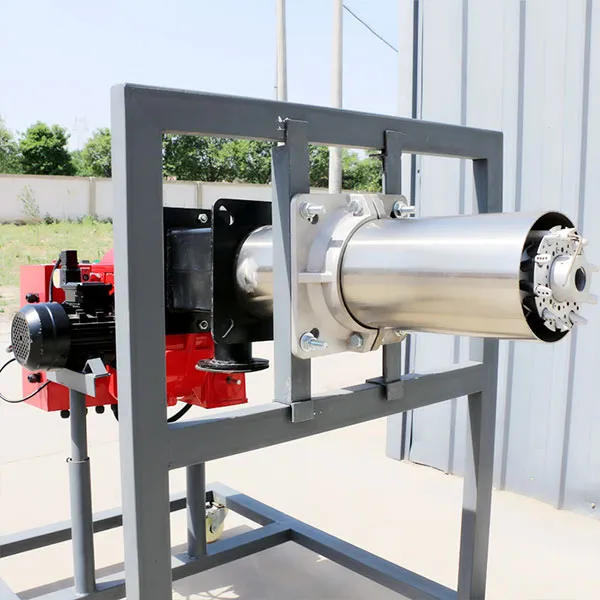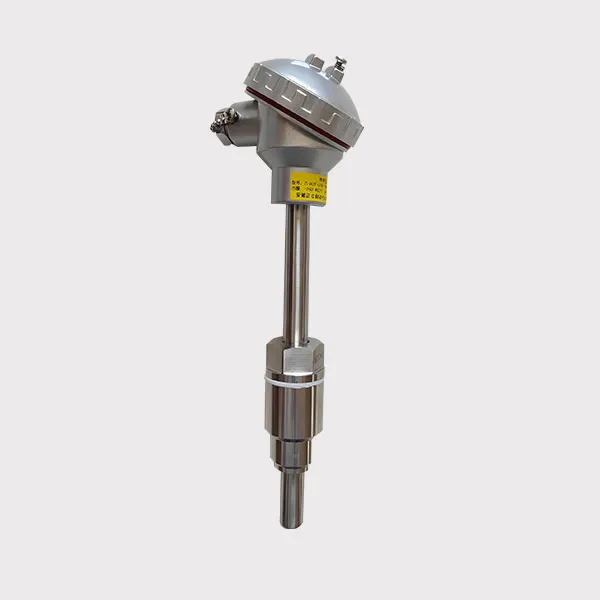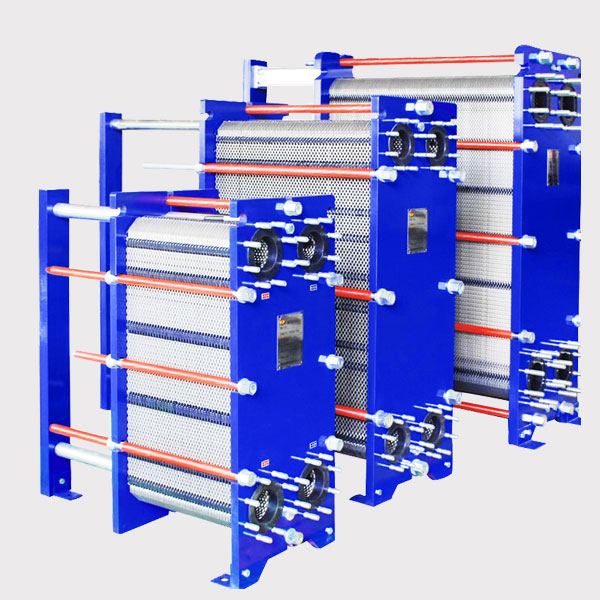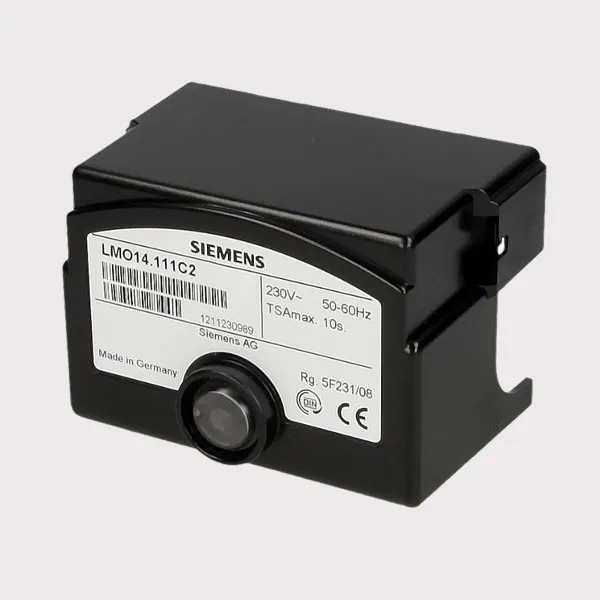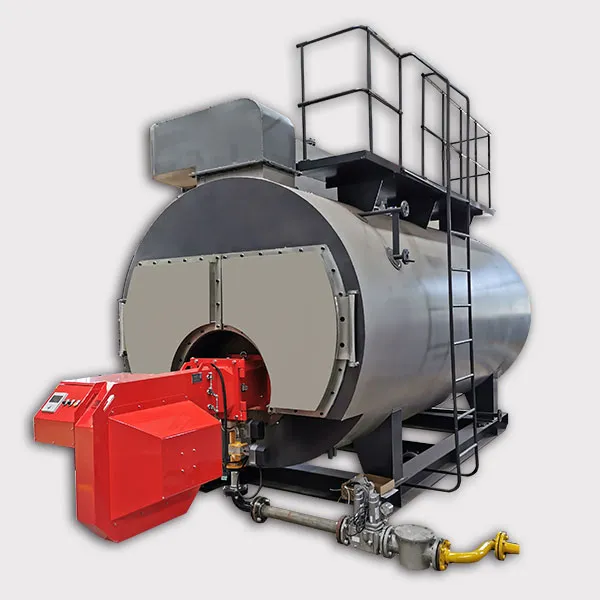Detailed Explanation of Staged Combustion Technology in Low-NOx Burners
2025-06-10 15:39:35
Staged combustion is one of the core technologies in low-NOx burners. By controlling the mixing process of fuel and air in stages, it disrupts the high-temperature, oxygen-rich environment required for NOx formation, significantly reducing nitrogen oxide emissions. This section provides a detailed analysis of the principle, types, key design considerations, and practical applications of staged combustion.

The graded gas low-nitrogen burner includes a distributor, a guide plate, an ignition electrode, an ignition fuel pipe and a combustion cylinder. The distributor is used to provide a flow path for the gas, including a main body and a plurality of gas nozzles connected to the main body. The main body is a cylinder with an interlayer, the outside of which is an interlayer and the inside is a hollow part. There are multiple gas distribution cavities arranged at intervals on the top of the interlayer. The gas enters the distribution cavity through the main body and is ejected through the gas nozzle.
The air flows through the air flow path formed by the hollow part of the main body and the gas nozzle to provide flame-retardant gas to the gas. This type of burner is equipped with a separate air circulation duct, which simplifies the equipment and saves space and cost. The three layers of combustion-supporting air, the two layers of gas and the entrained flue gas in the burner are arranged in layers, which reduces the flame temperature and the oxygen concentration in the flue gas, effectively reduces the emission of NOx, and meets the requirements of nitrogen reduction and environmental protection.
1. Core Principle of Staged Combustion
NOx generation depends on three conditions: high temperature (>1400°C), oxygen-rich environment, and nitrogen sources (N₂ from air or nitrogen compounds in fuel). Staged combustion disrupts this chain through the following mechanisms:
Delayed Mixing: Fuel and air are mixed in stages to avoid localized high-temperature zones.
Chemical Suppression: A reducing atmosphere is created in the initial combustion zone to convert nitrogen into N₂ instead of NOx.
Temperature Control: By dividing combustion into stages, peak flame temperature is reduced, suppressing thermal NOx formation.
2. Two Main Types of Staged Combustion
(1) Air Staging
Principle:
Combustion air is injected in two stages:Primary Combustion Zone (Fuel-Rich Zone): Only 80%–85% of the theoretical air is supplied, creating oxygen-deficient combustion. This lowers the temperature and generates reducing gases (e.g., CO, H₂), which convert NOx into N₂.
Secondary Combustion Zone (Burnout Zone): The remaining air is introduced to ensure complete fuel combustion.
Advantages:
Reduces thermal NOx by 40%–60%, especially effective for gas/oil boilers.
Simple structure and low retrofitting cost.
Challenges:
Requires precise control of the air-fuel ratio in the primary zone to avoid carbon deposition or excessive CO emissions.
(2) Fuel Staging
Principle:
Fuel is injected in two stages:Primary Combustion Zone: Most of the fuel (70%–80%) and all combustion air are supplied, creating an oxygen-rich environment.
Secondary Combustion Zone: The remaining fuel (20%–30%) is injected, where it ignites using high-temperature flue gas from the primary zone. Due to oxygen deficiency and lower temperature, NOx formation is suppressed.
Advantages:
More effective for reducing fuel NOx (e.g., coal, biomass), achieving 50%–70% reduction.
Challenges:
Requires a complex control system to coordinate fuel injection between stages to prevent flameout in the secondary zone.
3. Key Design Parameters and Optimization Strategies
Staging Ratio:
In air staging, the primary zone typically receives 80%–90% of total air demand. Too much air reduces NOx reduction efficiency, while too little causes incomplete combustion.
In fuel staging, the secondary fuel ratio should generally not exceed 30% to maintain combustion stability.
Mixing Intensity:
Swirlers, multi-port injectors, or turbulence enhancers ensure staged but thorough mixing of fuel and air.
Residence Time:
The primary zone should maintain a residence time of 0.3–0.5 seconds to ensure complete NOx reduction.
4. Typical Applications and Case Studies
Gas Boilers:
Combining air staging + FGR reduces NOx to below 30 mg/m³ (e.g., a European power plant retrofit project).
Coal-Fired Power Plants:
Fuel staging + SNCR reduces NOx emissions from 500 mg/m³ to 100 mg/m³ (e.g., a 1000 MW unit in China).
Cement Rotary Kilns:
Multi-stage burners with precalciner staged combustion achieve over 60% NOx reduction.
5. Limitations of Staged Combustion
Fuel Suitability:
Air staging works best for natural gas and light oil, while fuel staging is more effective for high-nitrogen fuels (e.g., pulverized coal, biomass).
System Complexity:
Requires precise air/fuel control systems, increasing maintenance costs.
Synergy with Other Technologies:
For ultra-low NOx (<50 mg/m³), staged combustion must be combined with post-combustion denitrification (e.g., SNCR/SCR).
Conclusion
Staged combustion achieves efficient NOx reduction through "phased supply, precise temperature control, and chemical reduction", making it a core process in low-NOx burners. In practical applications, the appropriate staging strategy should be selected based on fuel characteristics, emission requirements, and cost considerations, often in synergy with other low-NOx technologies (e.g., FGR, SCR).


